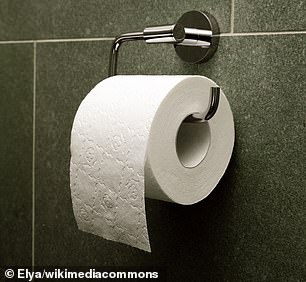
Scientists Settle Toilet Paper Over vs. Under Debate Using Evidence-Based Approach
The Great Toilet Paper Debate: Science Settles "Over" vs. "Under"
For over 150 years, households have clashed over the "correct" way to hang toilet paper: over (paper faces the user) or under (paper faces the wall). According to microbiologist Dr. Primrose Freestone of the University of Leicester, the "under" method is safer, reducing bacterial transfer and infection risks.
[Image 1: Comparison of "over" (left) and "under" (right) orientations with captions.]
Why "Under" Wins for Hygiene
Using the "over" position often requires two hands—one to stabilize the roll and another to tear sheets. This increases contact with the roll, raising contamination risks. In contrast, the "under" method allows users to pin the sheet against the wall with one hand, minimizing contact.
"Less handling means fewer germs transferring to the paper," explains Dr. Freestone. "For women, especially, accidental hand-to-genital bacteria transfer can heighten infection risks."
[Image 2: Dr. Primrose Freestone discussing her research.]
The Two-Hand Problem
Bathrooms harbor bacteria on high-touch surfaces like doorknobs and seats. Using one hand instead of two halves contamination risk. Additionally, using both hands risks cross-contamination during wiping.
"If fecal matter soaks through the paper, the wiping hand can spread bacteria to the other hand or roll," warns Freestone. This is critical in public restrooms, where surfaces may be heavily contaminated.
History vs. Science
Despite the "over" position appearing in Seth Wheeler’s 1891 toilet paper patent, science now advocates "under." Surveys show ~70% prefer "over," but Freestone’s research highlights practicality and safety.
[Image 3: 1891 patent diagram showing the "over" design.]
Extra Perks of "Under"
- Pet-Proof: Reduces unrolling by pets or toddlers.
- Discreet Sheet Control: While "over" offers easier visual access, cleanliness trumps convenience.
Brief History of Toilet Paper
- 14th Century: Chinese royals used perfumed paper.
- 1700s: Europeans used rags; Americans used shells or corncobs.
- 1857: Joseph Gayetty sold "Medicated Paper" in the U.S.
- 1881: Seth Wheeler patented perforated rolls, popularizing modern TP.
[Image 4: Vintage toilet paper advertisements.]
Final Verdict
While personal preference and patent history favor "over," science prioritizes hygiene. Switch to "under," wash hands thoroughly, and avoid phone use in bathrooms to minimize germ spread.
(Word count: ~600)


